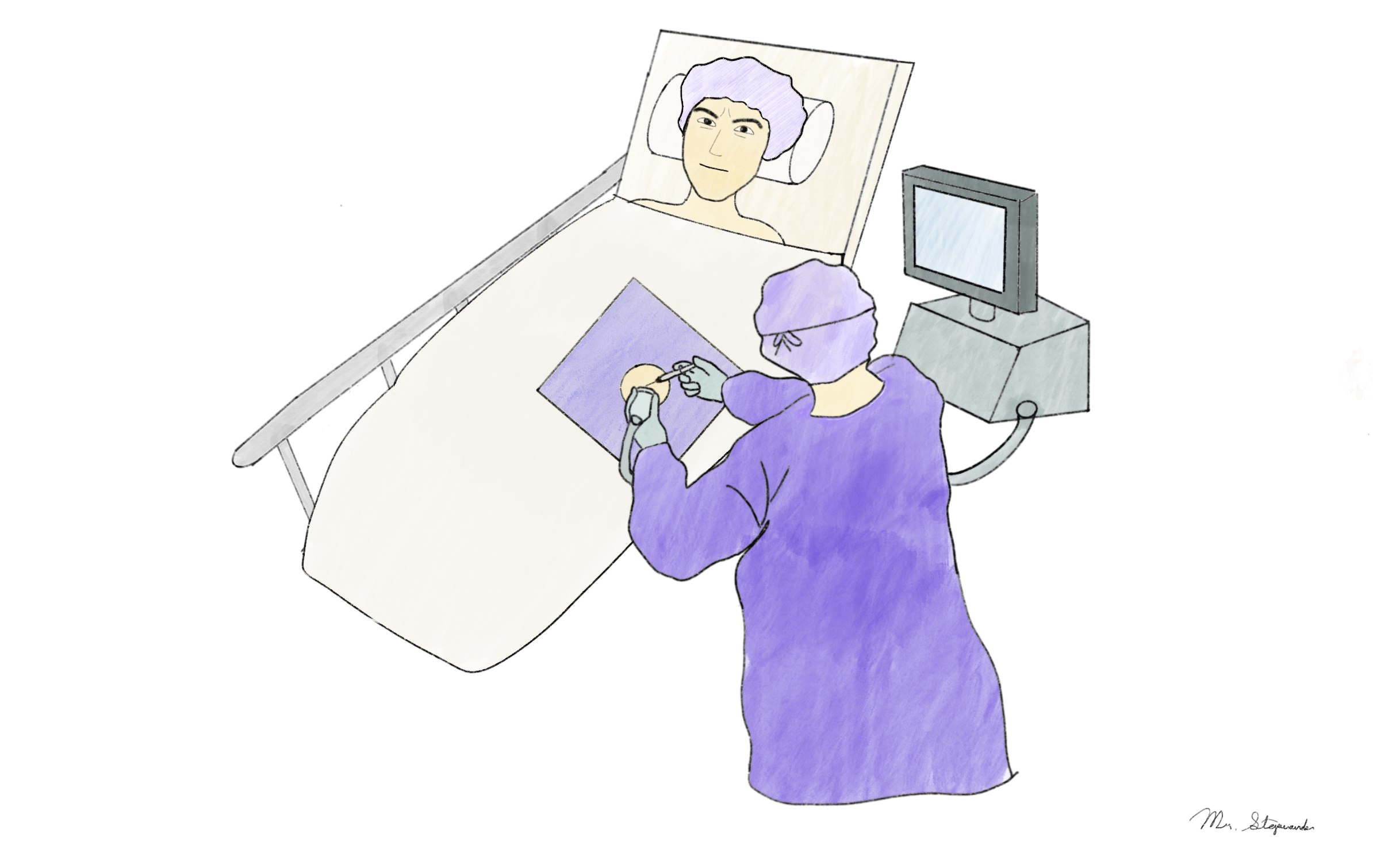Page Contents
OVERVIEW
Even though a paracentesis is a relatively simple procedure, some of its steps can get confusing due to a high degree of operator variability. There are a number of ways that a paracentesis can be performed, and this page deals with variations in style and technique after the skin has been numbed with lidocaine one is ready to numb the deeper tissues right before tapping the targeted ascites.

It is important to note that there are a number of valid ways to perform a paracentesis, certain providers may have preferences however in many cases there is more then one right way to perform a procedure.
WHAT FACTORS LEAD TO THIS VARIABILITY?
There are a few factors that change when various providers perform a paracentesis that lead to this variability in practice. These factors are listed below and interplay with each other (creating more unique permutations of how the procedure is performed):
1.) Whether or not to use real time ultrasound guidance when performing the steps of the paracentesis: this does change the nature of the procedure. Often times it seems the general preference is to NOT use real time ultrasound during the actual paracentesis for real time image guidance, however here is the reasoning for and against using ultrasound in this way:
- Advantages of not using ultrasound for real time image guidance: the technical difficulty of the procedure increases notably when trying to perform all the steps of a paracentesis using ultrasound guidance. This is because one of the operators hands will always be handling the ultrasound probe, and two hands can not be dedicated to holding the syringe and needle that will be used to access the ascites fluid. Without the ultrasound, each of the steps of paracentesis are technically much simpler With the right ultrasound scanning before the case, the believe is that real time ultrasound is not needed to perform this procedure safely.
- Advantage of using ultrasound for real time guidance: while the technical complexity does increase when also using an ultrasound probe for guidance, the advantage of having real time imaging guidance is relatively obvious: one will be able to do all steps with direct visualization of what they are doing and where their needle is going. It is true that abdominal contents (such as ascites and bowel loops) are not in fixed positions, and may change in orientation between when the patent is scanned initially for ascites and when the actual paracentesis is performed (especially if the patient is moved).
*Regardless of if the procedure is conducted with or without ultrasound, steps can be taken to make sure safety is prioritized and technical difficulty is minimized (see videos below).
2.) The type of needle to use to anesthetize the deeper tissues prior to performing the paracentesis: the type of needle that is used to deliver the numbing agent to the deeper tissues can be up to the operator. Here are some common choices and the reasoning behind their usage. These can all be done with or without ultrasound.
- Advantage of using a needle/catheter system (i.e Yueh needle) for delivery of lidocaine deeper: some providers will anesthetize the deeper tissues with the needle/catheter system that will actually be used to drain the ascites once it is accessed. The big advantage of this approach is that once the whole tract is anesthetized, the needle can simply be advanced into the ascites and the drainage portion of the case can begin. This saves time, and also cuts down on the number of needle pokes the patient will experience. Additionally, needles like the Yueh needle are longer and can give anesthetic deeper if needed right before accessing ascites.
- Advantage of using a lidocaine needle (25 gague needle) for delivery of lidocaine deeper: some providers will prefer to use a 25 gauge needle for delivery of lidocaine into the deeper tissues. This can be because this needle is smaller then other needles (for comparison the Yueh needle is 19 gauge in size) and may be tolerated better by patients initially before the deeper tissues are numbed.
- Combination of needle types for delivery of lidocaine deeper: it is not uncommon for providers to use both the methods above, giving lidocaine as deep as possible with the 25 gauge needle and then also giving lidocaine with their needle/catheter system as they advance into the collection of ascites for drainage.
USING LIDOCAINE NEEDLE AND NO ULTRASOUND
There are many options of how to give lidocaine and perform the paracentesis. One option is to use a 25 gauge lidocaine needle (as shown here) without any ultrasound guidance. Lidocaine can be given with the needle and then also intermittent aspiration can help detect when the needle is advanced into the ascites.
USING YUEH NEEDLE AND NO ULTRASOUND
The Yueh needle has a simple design however proper handling of the needle during a paracentesis can be slightly nuanced. The video below helps to provide some guidance on how to hold and operate the needle during a paracentesis (when no ultrasound guidance is being used).
There are many options of how to give lidocaine and perform the paracentesis. One option is to use a Yueh needle (as shown here) without any ultrasound guidance. Lidocaine can be given with the needle and then also intermittent aspiration can help detect when the needle is advanced into the ascites. Once in the ascites the Yueh catheter can be advanced into the collection and the ascites can be drained.
USING LIDOCAINE NEEDLE WITH ULTRASOUND
USING YUEH NEEDLE WITH ULTRASOUND
Page Updated: 09.29.2019